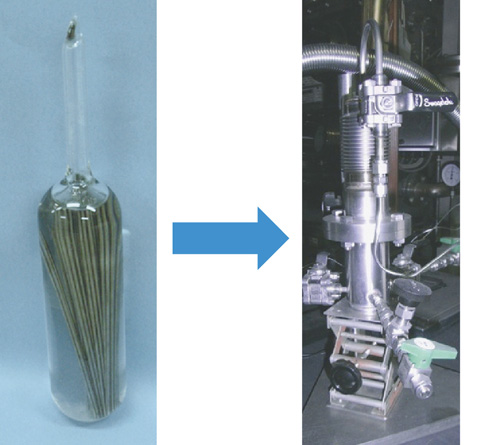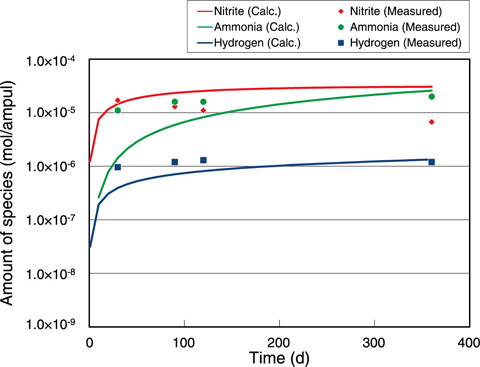
Fig.3-6 Reaction container (glass ampul) and apparatus for analysis of gas phase (ampul opening member)

Fig.3-7 Conceptual model of nitrate evolution accompanied by corrosion of carbon steel

Fig.3-8 Variation of reaction products (NO2-, NH3, and H2) with time in an ampul
A number of low-level radioactive wastes contain large amounts of nitrate salts. Nitrate ions are oxidizing species that can be reduced to nitrite and ammonia by the corrosion of metals inside a repository for radioactive wastes. It is possible that nitrate ions and their reduction products affect the mobilities of radionuclides owing to changes in their solubilities and sorption distribution coefficients. Therefore, estimation of the chemical evolution of nitrate ions accompanied by metal corrosion is necessary to assess the safety of repositories for the geological disposal of radioactive wastes.
Carbon steel, which is likely to be used extensively and disposed of in repositories, was immersed in a closed aqueous solution of NaNO3 (Fig.3-6) to observe the chemical interaction between metal and nitrate ions. The experimental pH range of the NaNO3 solution was 12.5∼13.5, which was designed to simulate conditions imposed by the pore fluid of cementitious material. Despite the accelerated cathodic reaction due to the existence of nitrate and nitrite ions, the results of the immersion experiments showed no acceleration of the corrosion rate of carbon steel in this pH range. This implies that the system is controlled by an anodic reaction. The nitrate reduction accompanied by the corrosion of carbon steel is considered to be a reaction series of NO3-→NO2-→NH3. The nitrate reduction reaction competes with the water reduction (hydrogen evolution) reaction under the anodic controlled conditions. Therefore, the nitrate ions strongly reduce the hydrogen generation rate in a 1.0 mol dm-3 NaNO3 solution.
Accordingly, the sum of the current of the reaction series NO3-→NO2-→NH3 and that of the water reduction reaction was assumed to be balanced with the anodic current of carbon steel (conceptualized in Fig.3-7). Examples of the simulation results are shown in Fig.3-8. To develop a system for estimating nitrate impacts on the chemical conditions inside and outside of repositories for radioactive waste, this model will be combined with a model of nitrate chemical evolution caused by microbial activity and mineral reactions outside a repository.
The present study was sponsored by the Ministry of Economy, Trade and Industry (METI) through the program “Combined development of nitrate salt removal technology and an assessment system for the impact of nitrate on the co-locational disposal of TRU waste and HLW” (2007, 2008, 2009, 2010).